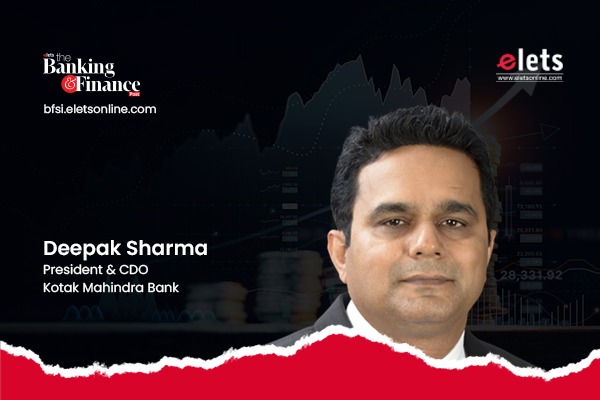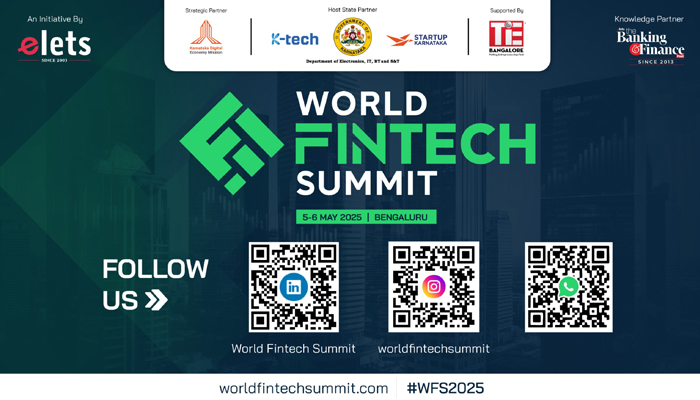India is a country with many ethnicities, and there are various perspectives on technology and digital platforms. People who live in urban and metro regions are fluent in English, while those who come from rural and semi- urban areas of the country prefer to utilise their regional language to interact with financial service providers. To know more about how technology is playing a significant role in the banking industry, Deepak Sharma, President & Chief Digital Officer, Kotak Mahindra Bank, had an interaction with Rashi Aditi Ghosh and Srajan Agarwal of Elets News Network (ENN).
How do you perceive the readiness of the Indian banking sector about technologies such as Blockchain and Artificial Intelligence (AI)?
A lot of people don’t associate banking with technology. However, it is the industry that has adopted technology much faster than a lot of other industries around us – be it the advent of mobility as the world saw many years back, and how it got leveraged, or when banks managed a huge volume of data through AI and ML.
Technology including blockchain has been around for a while and banks are looking at how we bring the right use cases leveraging these kinds of technologies.
I think, most banks have started several initiatives on blockchain, and Kotak is a part of that along with some of our industry peers.
We are also looking into how blockchain cryptography can be used for authentication and client identification. Banks are seeking more scalable and real- world challenges to employ blockchain or machine learning for credit underwriting, such as anticipating or monitoring credit decisions.
Blockchain and machine learning technologies are being used in various regions of the world, and we see something similar happening across the banking industry.
Security is a major concern when you are dealing with the digital world. How are you expanding your offerings in alignment with this?
We have observed a significant shift in consumer preferences since the sudden outbreak of COVID-19. Since most of us were isolated from the actual world for a long period, we all spent a lot of time in front of our screens, whether it is social media, OTT, or financial services.
Customers have adopted a digital-first approach, and most of these behaviours will remain. However, unlike many other digital interfaces, this one deals with actual money.
Banks are always reviewing and improving their security settings, as well as authentication processes, to ensure that the entire banking system remains resilient and safe.
Securities are the weakest link, and the bank has protected that infrastructure in order to improve client experiences, because many fall victim to phishing, and end up giving their passwords or OTPs in order to gain some freebies or reward redemption.
What security measures are implemented by banks to curb frauds? Would you like to share a few instances pertaining to this?
We promote safe banking practices and educate our customers to prevent phishing scams. We educate them about not sharing their OTPs and passwords with unknown people.
While technology has been a boon, it can be a bane if we use it recklessly. Hence, it is of paramount importance for us to build a responsible digital behaviour among our customers.
Disruptions have been a common phenomenon in the banking sector. How has the journey of digital transformation been for you in the new digital economy?
India is a country with many ethnicities, and there are various perspectives on technology and digital platforms. People who live in urban and metro regions are fluent in English, while those who come from rural and semi-urban sections of the country prefer to utilise their regional language to interact with financial services.
The products they expect vary, and some are motivated by tiny savings and micro-lending, while others are interested in high-value loans.
How do you see the BFSI industry shaping in the next 5 years?
The industry is transforming in two ways: technological enablement and leadership.
We harness technology to create products and services that add value to both customers and our organisation. As we move technology to create those new business models and customer experiences to better serve clients, technology like data science and machine learning can better identify risk profiles and offer a more customised mortgage for financial investment.
Also Read | Our Action Plan Includes Digital Inclusion in Our Top-Tier Tech and Product Teams
Customers formed similarly for small enterprises or huge corporations, that continue to provide the last mile connectivity, will benefit from technology.
We are witnessing a transition from 4G to 5G, and technology is playing a significant role in providing improved data connectivity and stability. We have been considering how we leverage emerging and existing technology, as well as how we envision technology being used to produce goods and new business models. That is how we continue to view technology, bringing value to our clients with what we do.
Elets The Banking and Finance Post Magazine has carved out a niche for itself in the crowded market with exclusive & unique content. Get in-depth insights on trend-setting innovations & transformation in the BFSI sector. Best offers for Print + Digital issues! Subscribe here➔ www.eletsonline.com/subscription/




















